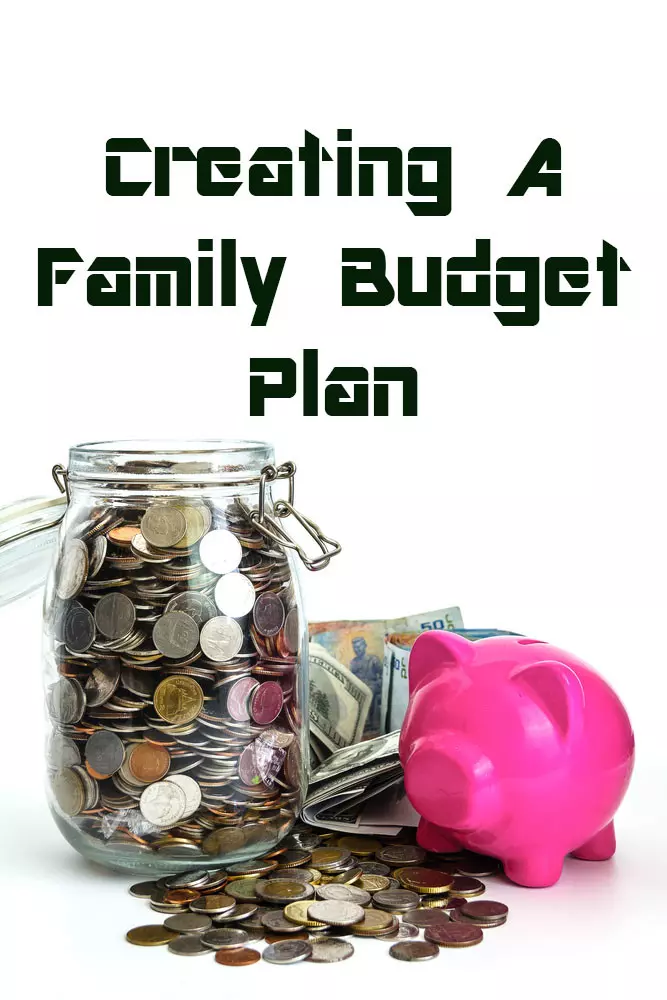If one of your goals is to simplify your life, then it needs to begin with creating a personal or family budget plan.
Living simple does not mean living without the things you need or want in your life. It means managing what you have to live the life you want!
 Quite honestly, anyone can choose to live simple or chaotic no matter their income level.
Quite honestly, anyone can choose to live simple or chaotic no matter their income level.
It all comes down to choices. Living simple is about picking and sticking with the things that matter most, and removing all of the clutter that can keep a life stress-filled and chaotic.
And that simple life all starts with creating a family budget plan. After all, it’s hard to manage anything if you don’t know what you have or need, especially if you don’t know where you are in the first place!
About 4 years ago we created a master family budget plan as one of our annual goals.
For us, it was an incredible and unbelievable life-changing moment. Within months, we were able to track and eliminate wasted spending.
By year two, it had completely changed our spending habits, and simplified our life beyond belief. In a nutshell, it allowed us to concentrate on what mattered most for us and our future – our family, and building a simple life at the farm.
Here are the 5 essential keys that make a big difference in creating a family budget plan that works:
1. Be SPECIFIC And HONEST With Your Wants, Goals and Finances!
Know what you want before you ever begin. Living simple can mean something different to everyone and every family.
You have to have a starting point. Do you want to live in a smaller house, or start saving to build your own?
Do you want to have less stuff, less debt? Maybe it is a combination of everything just listed – or something more.
Whatever the goals are, be specific and WRITE THEM DOWN! It is not enough to say “we want to have less debt,” or, “we want to save money.”
Come up with specific goals, such as, “we want to have zero credit card debt by the end of this year,” or, “we want to be able to save $500 a month and pay off our car this year.”
Most budgets and or goals fail because they are not specific. Once the goals are down on paper, the budget becomes easier to create, follow, and adjust to meet those goals.
2. Start With Your Current Expenses and Income
Once the goals are figured out – its time to see exactly where you stand now. Start by figuring out exactly what income is brought into the household each month, and write it down.

Growing a garden can be a great way to keep down food expenses!
Next, create a list of categories for every current expense. Include the standards, like house payment, water bill, electric, cable, phones, car payments, insurance, etc.
This is also the time to create a category for savings. Put down a realistic number that you want to save each month. It needs to be in the main budget to make sure it happens!
Next, create categories that will catch the unknowns (the ones that will surprise you later on) – like groceries, restaurants, impulse purchases,movie rentals, fuel, etc.
Whatever you do – DO NOT create a miscellaneous category! It makes it too easy to hide bad spending habits.
Now put a number to what you spend, or think you spend on each and every category every month. Some you will know exactly, such as the house and car payment.
Others you will need to go through and guesstimate. But DO IT! Just this first act of putting it all down on paper or in a spreadsheet is a huge step.
It is also almost certain to open your eyes to some wasted spending before you even begin the budget! First chore – add up what you think you spend – and make sure the number is lower than what you make. If not – you have some things to eliminate from the get go!
We put our family budget plan on a simple excel spreadsheet that we could both access.
3. Create A Single, Separate Account For Bill Paying
Next, create a single, separate account to pay all of your bills from. Each month, or every pay period, have money deposited into that account that will handle the budget you established.
No more, no less. For us, we both put in a set amount to that account from our own personal accounts that covers the budget.
This eliminates so many issues and makes paying bills an easy, efficient process.
When payments are jumbled between two, three or even more accounts, it becomes easy to get off track. When was what paid? Who pays what? All of those questions go away with one single account to pay from.
We had the bank issue us each a debit card to the budget account. We then used the cards for all purchases related to the budget. It made it a breeze to track.
The side benefit is that what is left in each of the personal accounts becomes discretionary income. There is no worry of what is in a personal account to pay a bill.
The personal accounts can be used for anything extra. Perhaps to put more in savings, pay down debt, or perhaps save to take a trip without the worry of cutting into the main expenses.
However, if the main budget falls short, and you need to deposit more in from a personal account, believe me when I say it will really makes you watch the main budget more closely the following month!
4. Track and Review Spending By Category
The biggest and most critical step of all – track every expense! Set up a way to track every purchase from the budget. For us, it was a shared on-line spreadsheet that made it easy to put in expenses as they occurred.

A little more home brewed coffee can be a big savings to the budget
Be sure to write down every expense in every category. It’s not enough to just see each category’s total.
It will reveal things that you never imagined. Like, “wow, I went to Starbucks 9 times last month and blew $52.00 of our restaurant money on coffee. Maybe I can just make that at home and save.” 🙂
Get in the habit of writing down an expense as it occurs.
5. Review Your Family Budget Plan Every Month
Another huge step! Take time together to go over the budget at the end of every month. I can almost guarantee in the first few months you will be shocked to see how much money is wasted on things you don’t even need or use.
This is also a huge help when it comes to keeping unnecessary clutter from entering your house. As you look back month after month, you will see a purchase of an item you thought you had to have – only to see it sitting in a corner or a closet.
The budget review is an incredibly powerful step!
Not only did it allow us to see where our money was spent – but where it was truly being wasted.
We were amazed to see how many small thoughtless purchases added up to whole lot of waste in our budget.
Creating a family budget plan allowed us to re-adjust our spending month by month and save more than we ever thought possible.
Creating a family budget doesn’t have to be a harrowing experience. In fact, it can be quite the opposite.
We actually had a lot of fun during the entire process, and still do to this day. It has certainly helped eliminate a lot of unnecessary chaos and stress.
Here’s to a happier, more simple and stress free life in 2017! – Jim and Mary
To receive our Recipes, DIY and Gardening articles each week, sign up to follow the blog via email in the right hand column above, “Like” us on Facebook, or follow us on Twitter. You can also check out our new book, Growing Simple, now available on Amazon.com. This post may contain affiliate links.
